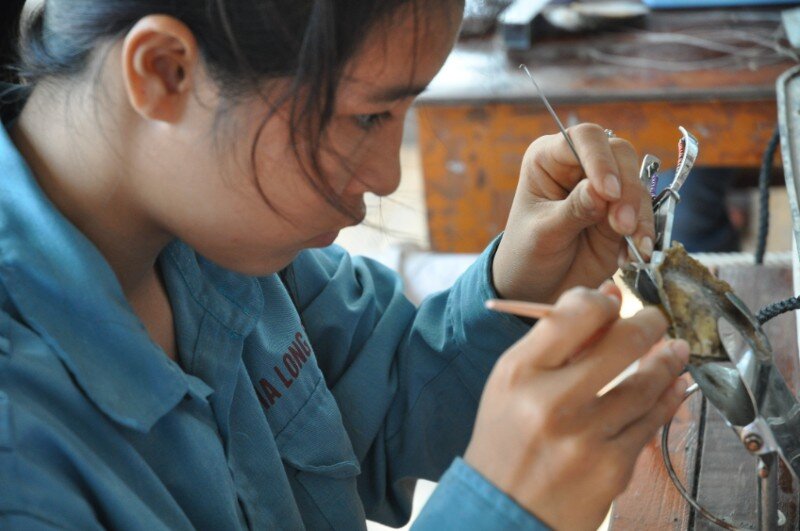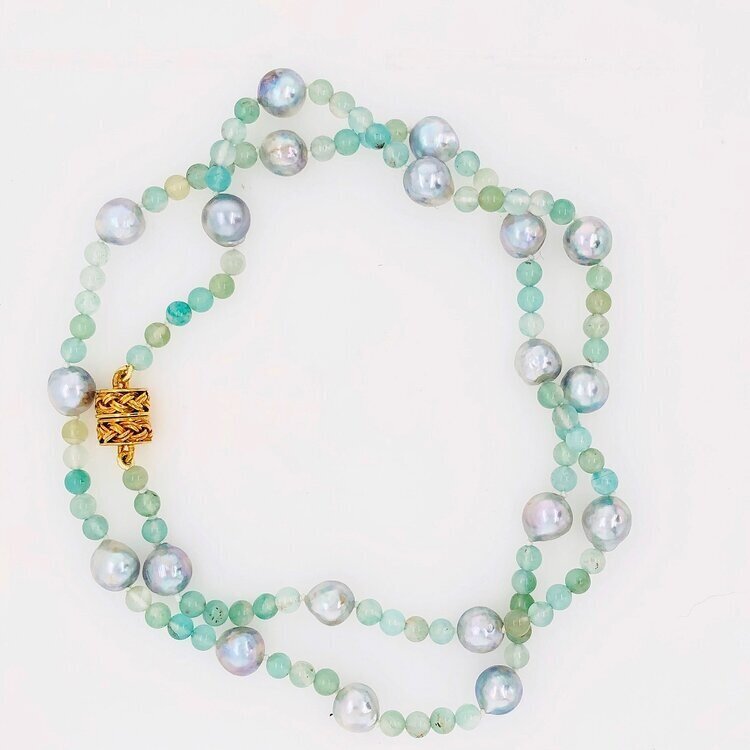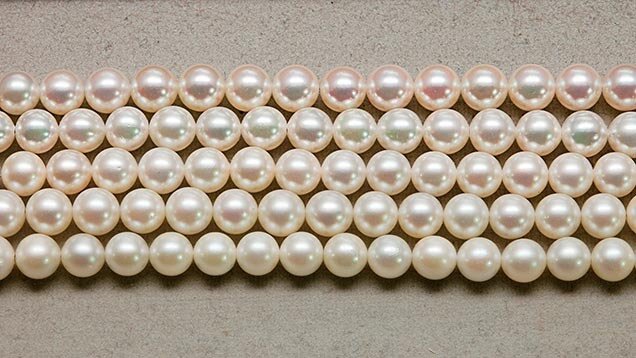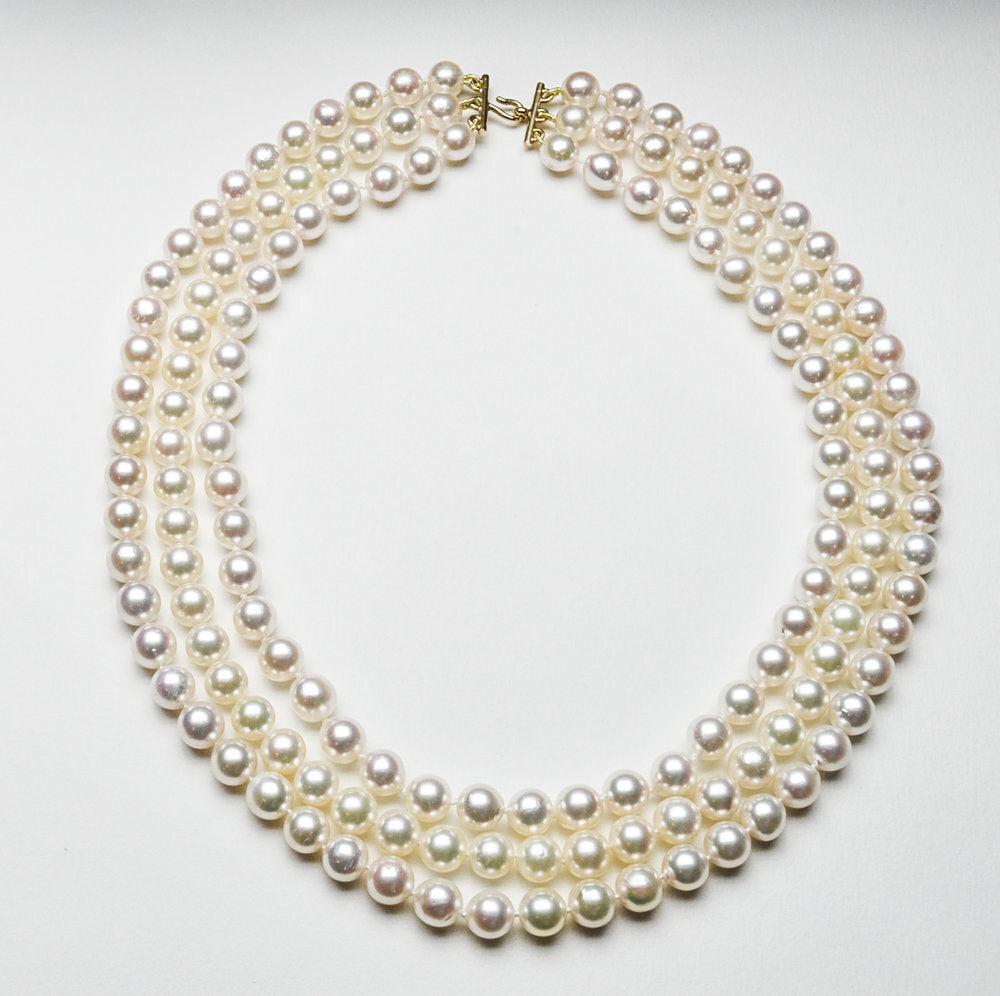
Nucleation
Nucleation is the process of surgically implanting a spherical “starter” mother of pearl bead into the gonad organ of (in saltwater) oysters or (in freshwater) mussels. It is an extremely delicate operation to slice into the organ without harming the mollusk.
Along with the bead, a tiny piece of mantel tissue that is cut from a donor oyster is inserted next to the bead to start the nacre production. Most of the technicians are women known for their skill and patience…You can see, in this picture, the oyster shell is held open by a clamp and small piece of wood. The implanted shells are then put in netted panels and tenderly cared for while the pearl sac forms and layers and layers of nacre are laid on top of the mother of pearl bead. The minimum time in the water is 6 months, but up to three years for thicker more lustrous nacre. Water temperature and perfect conditions are paramount to the success of a beautiful pearl crop. Weather can have disastrous effects on an entire crop of pearls. Think of this when you hear about cyclones and major storms in the south seas.










